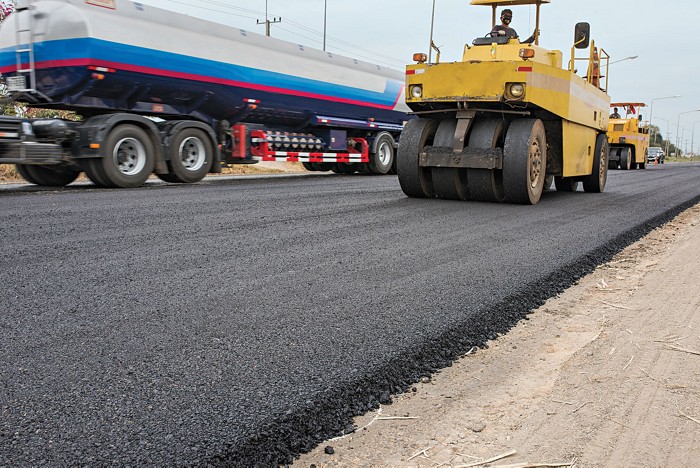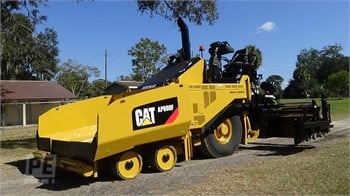Some Known Questions About A1 Professional Asphalt & Sealing Llc.
Some Known Questions About A1 Professional Asphalt & Sealing Llc.
Blog Article
A1 Professional Asphalt & Sealing Llc for Dummies
Table of ContentsA Biased View of A1 Professional Asphalt & Sealing LlcNot known Facts About A1 Professional Asphalt & Sealing LlcExcitement About A1 Professional Asphalt & Sealing LlcFacts About A1 Professional Asphalt & Sealing Llc RevealedA1 Professional Asphalt & Sealing Llc Can Be Fun For Everyone

The oil in a car engine is not simply oil. It contains a variety of ingredients to enhance the vehicle's performance. These consist of polymers, thickness modifiers, heat stabilizers, additional lubricating substances, and wear ingredients. The REOB includes all the ingredients that remained in the waste oil as well as the wear steels from the engine (primarily iron and copper).
Nonetheless, by making many blends using different REOB samples and different asphalt binders, the variants greatly can be balanced out. Several States supplied examples of well-known REOB make-up to TFHRC researchers, who assessed the examples to compare the percentage of added (understood) REOB to the discovered (checked) quantity. The evaluations showed a similar percent of added and located REOB.
Things about A1 Professional Asphalt & Sealing Llc
None of those States recognized that the asphalt they were purchasing contained REOB. One State urged its examples had no REOB - https://zzri1z2o90l.typeform.com/to/BPqH2MM1.
Of the 1,532 samples checked, 12 percent consisted of REOB, and some included substantially high levels of it at 1020 percent. The highest level was 34 percent in a sample from Texas, which TxDOT had made use of in a patching substance. This screening likewise revealed the visibility of phosphoric acid in 11 percent of the examples, and 2 percent included ground tire rubber.
2 years ago at TRB's yearly conference, the Federal researchers held an REOB workshop and provided the searchings for of their laboratory assessments to a standing room-only group. Some companies do not specifically ban REOB, they do impose physical examinations that prevent its useeffectively a restriction. Others do not outlaw it by specification, however have arrangements with asphalt distributors to avoid using REOB
The 5-Minute Rule for A1 Professional Asphalt & Sealing Llc
A handful do enable REOB, some within particular limits. As an example, Ohio and Texas restriction degrees to less than 5 percent of the asphalt. To develop a reputable test technique that all States can make use of, the TFHRC scientists set up a round-robin test strategy. The participants are 11 State highway companies (Illinois, Massachusetts, Minnesota, Mississippi, Montana, North Carolina, Oklahoma, South Carolina, Texas, Vermont, and Wyoming), 2 independent testing labs, the Ministry of Transport in Ontario, Queen's University in Ontario, and an Ontario paving contractor.
In overall, the researchers prepared and delivered 720 blends. The individuals are testing the samples independently using the standards given by the TFHRC scientists. The round-robin testing is almost completed, and TFHRC is in the procedure of accumulating the outcomes. The result will be a proposed AASHTO test approach that any kind of State can embrace and use (a-1 asphalt).
The pavement with REOB, which is situated 0.6 mile (1 kilometer) from the pavement without REOB, has the same subgrade, website traffic density, and climate. The segment of Highway655 with 5 to 10 percent REOB discover this showed substantial splitting. In this example, the existence of REOB was the identified reason of breaking at a reduced temperatures.
"In our experience in copyright, even little amounts of 23 percent can be an issue." An area of test sidewalk in Minnesota (MN1-4) found to contain REOB additionally cracked prematurely. The sidewalk performed well for the very first 3 to 4 years, however then started to fracture. This sidewalk is also based on reduced temperatures.
Some Known Details About A1 Professional Asphalt & Sealing Llc
The examinations were not comprehensive, however they showed that at degrees of 6 percent or even more, the tensile toughness of the asphalt went down considerably. At a level of 3.5 percent REOB, the variation in the physical test approaches was above the effect of REOB. In truth, it was hard for scientists to examine whether REOB was present.

One binder specification thought about is the difference in between the low temperature crucial requirements temperature level for tightness (S) in the bending light beam rheometer and the flexing beam of light rheometer creep slope (m-value) kept in mind as Tcritical. Two independent study groups, one from AASHTO and the other from the Asphalt Institute, wrapped up that even more research is required on the use of REOB in asphalt.
Previously, all asphalt testing measured design residential or commercial properties such as stiffness. These examinations do disappoint what materials had been included in the asphalt. One sample gotten during the TFHRC study had an extremely odd evaluation. The example had the complying with examination outcomes: Superpave PG 64-28 with a high temperature quality of 67.3 Tcritical on the bending beam rheometer was 6.7 levels Celsius.

The Definitive Guide to A1 Professional Asphalt & Sealing Llc
These outcomes show there are weak points in the standardized design screening procedures that might be exploited. The manufacturer might have a financial benefit and the item passes all the standardized examinations, yet the item might not be beneficial to ensuring long-lasting efficiency. To address this issue and the development of new asphalt ingredients and extenders, TFHRC is starting a research study program to utilize handheld spectroscopic tools, x-ray fluorescence spectroscopy, and Fourier transform infrared spectroscopy to make it possible for analyses to be done in the area instead of needing to take examples back to the laboratory.
Report this page